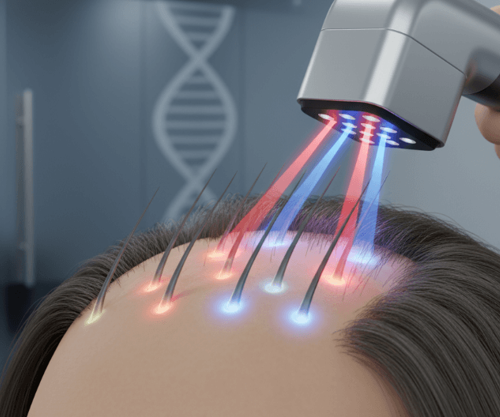Korea has become a global leader in medical hair restoration tourism, with state-of-the-art clinics, expert doctors, and comprehensive packages for international patients. For travelers dealing with hair loss, two of the most commonly offered treatments are:
- PRP (Platelet-Rich Plasma) Therapy
- Hair Transplant Surgery (FUE or FUT methods)
But which option is better for you as a medical tourist in Korea? Let’s explore the pros, cons, and doctor-guided recommendations for each, based on Korean clinical standards, patient expectations, and medical suitability.
🌿 What Is PRP Therapy?
Platelet-Rich Plasma (PRP) is a non-surgical treatment in which your own blood is processed to extract growth factors that are then injected into your scalp. These growth factors stimulate weakened or dormant hair follicles to regrow thicker, healthier hair.
Ideal for:
- Early-stage hair thinning
- Androgenetic alopecia (non-scarring)
- Postpartum hair loss
- Patients who cannot undergo surgery
- Tourists looking for non-invasive, minimal downtime options
Korean Clinic View:
“PRP is ideal for younger patients or travelers seeking quick treatment with minimal recovery time. It’s often the first-line option for medically stable patients with early-stage hair loss.”
🏥 What Is Hair Transplant Surgery?
Hair transplant surgery (FUE or FUT) involves harvesting healthy follicles from a donor area (usually the back of the scalp) and implanting them into bald or thinning areas.
- FUE (Follicular Unit Extraction): Individual follicles are extracted and implanted. Less scarring, more precision.
- FUT (Follicular Unit Transplantation): A strip of scalp is removed and dissected into grafts. Offers a higher number of grafts in one session.
Ideal for:
- Moderate to advanced hair loss
- Patients looking for permanent, visible results
- Those with stable donor hair
- Tourists willing to stay in Korea for 7–10 days for recovery and follow-up
Korean Clinic View:
“Hair transplant is the most definitive solution for patients with significant hair loss. Korean techniques focus on natural density and artistry—especially important for international patients seeking visible change.”
⚖️ PRP vs Hair Transplant: At-a-Glance Comparison
| Feature | PRP Therapy | Hair Transplant (FUE/FUT) |
|---|---|---|
| Invasiveness | Non-surgical, injection-based | Surgical (minor procedure) |
| Recovery Time | 1–2 days | 7–10 days |
| Visible Results | 3–6 months (gradual improvement) | 6–12 months (permanent results) |
| Ideal for | Early-stage thinning, mild hair loss | Moderate to severe hair loss |
| Repeat Sessions | Every 1–3 months (usually a series) | Usually 1–2 surgeries |
| Cost in Korea (approx.) | $400–$800 per session | $3,000–$8,000 per surgery |
| Tourist Stay Requirement | 1–2 days | 7–10 days (FUE), 10–14 days (FUT) |
| Pain Level | Mild (numbing cream used) | Mild–moderate (local anesthesia used) |
🧑⚕️ Doctor-Based Recommendations: Which Is Right for You?
✅ Choose PRP if:
- You’re in the early stages of hair loss (thinning, receding)
- You cannot take time off for recovery
- You prefer natural stimulation over surgical procedures
- You have medical concerns that make surgery risky (e.g., bleeding disorders)
- You’re combining treatment with a short trip to Korea (2–3 days)
Example:
A 29-year-old woman from Singapore experiencing postpartum thinning visits Seoul for a 5-day vacation. A PRP session at a Gangnam clinic takes just 1 hour and requires no downtime. She’s prescribed a 6-month booster plan with optional teleconsults.
✅ Choose Hair Transplant if:
- You’ve had significant, long-term hair loss
- You want maximum density and permanent coverage
- You are medically fit and ready for a minor procedure
- You can stay in Korea for at least 7–10 days post-op
- You want a one-time, long-lasting solution
Example:
A 42-year-old man from Australia with Norwood stage 5 hair loss schedules an FUE transplant in Seoul. He stays 9 days: 1 day pre-op consult, 1 day surgery, and 7 days recovery/monitoring. Results are expected to mature over 9–12 months.
🌍 Which Option Is More Popular Among International Patients?
According to Korean medical tourism data:
- PRP is more popular among short-term visitors (tourists, business travelers, K-beauty enthusiasts)
- Hair Transplants are favored by serious medical tourists who plan their trip specifically for this procedure
🇰🇷 What Makes Korea a Top Destination for Both?
- Board-certified dermatologists and plastic surgeons with global training
- High-tech equipment (microscopic PRP centrifuges, sapphire blade FUE tools)
- Medical tourism support: English-speaking staff, visa assistance, aftercare packages
- Integrated treatment plans: PRP + LLLT (Low-Level Laser Therapy), or Transplant + PRP boosters
💼 Treatment Package Insights for Tourists
| Treatment Type | Typical Package Inclusions (in Korea) |
|---|---|
| PRP | 1 session, scalp scan, take-home care kit, follow-up via teleconsult |
| FUE/FUT | Pre-op bloodwork, surgery, hotel stay, daily dressing change, interpreter |
🧳 Planning Tip for Hair Loss Tourists
If unsure, many Korean clinics offer initial virtual consultations. You can send photos or videos of your scalp, and receive a custom plan recommending PRP, Hair Transplant—or both.
🧠 Final Verdict: Which Is “Better”?
There is no one-size-fits-all answer. Instead, Korean clinics personalize recommendations based on your:
- Hair loss stage
- Health condition
- Budget
- Length of stay in Korea
- Desired results timeline
👉 Many patients combine PRP with hair transplant surgery to enhance post-op recovery and promote stronger follicle growth.
✈️ If You’re a Hair Loss Tourist Considering Korea:
| Scenario | Best Treatment |
|---|---|
| Mild thinning + short trip | ✅ PRP |
| Advanced baldness + 1-week stay | ✅ FUE/FUT |
| Early balding + long-term solution desired | ✅ FUE + PRP boosters |
| Young age + hereditary hair loss | ✅ PRP first, monitor response |
📌 Conclusion
Korea offers world-class solutions for both PRP and Hair Transplants. Whether you’re seeking a non-invasive fix or a permanent transformation, you’ll find cutting-edge care, experienced doctors, and patient-focused service tailored to your needs as an international guest.
Start with a virtual consultation to determine the best path—and plan your journey to healthier hair with confidence.




